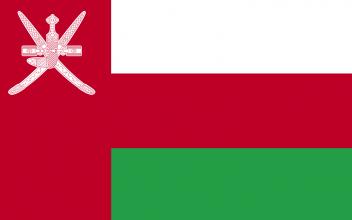Excavations in Panjikent in Tajikistan have revealed mural paintings of particular significance for the history of literature. These works by Sogdian painters, which range from the 6th to the 8th century AD, illustrate fables, epics and folk tales from different origins along the Silk Roads. The literary works represented on the walls include for instance fables by Aesop, stories from the Indian Panchatantra and the tale of the seven exploits of the Persian warrior Rustam.
From the 9th to the 15th century AD, Quanzhou was China’s major seaport for international trade. China entertained extensive relations with the Muslim world, and many Islamic monuments can still be found in Quanzhou. Among the Arabic and Persian inscriptions which were excavated in the city, 28 “nisbâs” (adjectives indicating a person’s place of origin or ancestry) were found.
Ancient Arabic poetry used two elaborated structures that acquired considerable prestige and became recognized as classic structures of Arabic poetry: one reserved strictly for the funeral elegy, the marthiya, and the second one, the qasida (the ode) serving as the framework for all thematic developments.
The island of Sri Lanka was a popular stopover for merchants because of its strategically advantageous position on various oceanic trade routes, its beautiful scenery and the valuable goods that could be found there, such as pearls and precious stones. It was also a meeting place for sailors, adventurers and pilgrims from different cultural backgrounds. Arab merchants came to Sri Lanka even in pre-Christian times, and their influence became more and more important after the birth of Islam, when Arab settlements spread all over the island.
Textiles and artistic fabrics are one of the oldest art forms of Central Asia. From the sixteenth to the mid-nineteenth centuries, silks, velvet, brocade, and wool were central to trade and culture in Iran, India, Western China, Transoxania and Mongolia, and carpets were the most important product of this art.
There is still much to be discovered about the crafts and techniques of metalwork, ceramic and sculpture in sixteenth to nineteenth century Iran, Afghanistan, Transoxania, Western China and India. In all of these countries there are surviving artefacts in copper, bronze, steel, gold and silver, as well as ceramics and sculpture. Weapons were also produced in these materials, although very few survive from before the nineteenth century.
Archaeological findings suggest that several sites on the Malay Peninsula were trading centres already from prehistoric times. The earliest trading centres, situated both on the East and West coast, were mainly collecting centres from where local products were sold. They probably traded with Mainland Southeast Asia.
The Malaysian region acted as a land bridge between the Bay of Bengal and the South China Sea, linking mainland Southeast Asia with the rest of the islands. Archaeological data records prehistoric trade before and after the Pleistocene era. During this period coastal prehistoric sites developed into ports of trade and exchange, both intra-regionally as well as with mainland Southeast China. The abundant supply of minerals, such as tin and gold on the Peninsula, led to early settlements, including Hinduized Indonesian settlers, and to extended trading relations.
The art of healing was very important in Buddhism, since the Buddha himself emphasized that health is among the most precious goods a person can possess. Hospitals were established in the Sri Lankan capital Anuradhapura from the 4th century BC onwards, and several Sri Lankan kings had medical knowledge. A large number of hospitals for different diseases were subsequently set up in the country, which were used both by the people and by Buddhist monks.
While there an overlapping of cultures of East and West via the Silk Routes usually occurred throughout history, the peninsula of Korea, however, restricted itself to mostly ‘absorbing’ cultural and artistic influences from far and wide and few traces of Korean culture have been found in Central Asia. Evidence of this cultural and material appropriation can be found in several tumuli, including buckled belts with a Scythian zoomorphic influence, Roman and Germanic glassware, central-Asian inspired metalwork, Chinese-inspired painting techniques.




